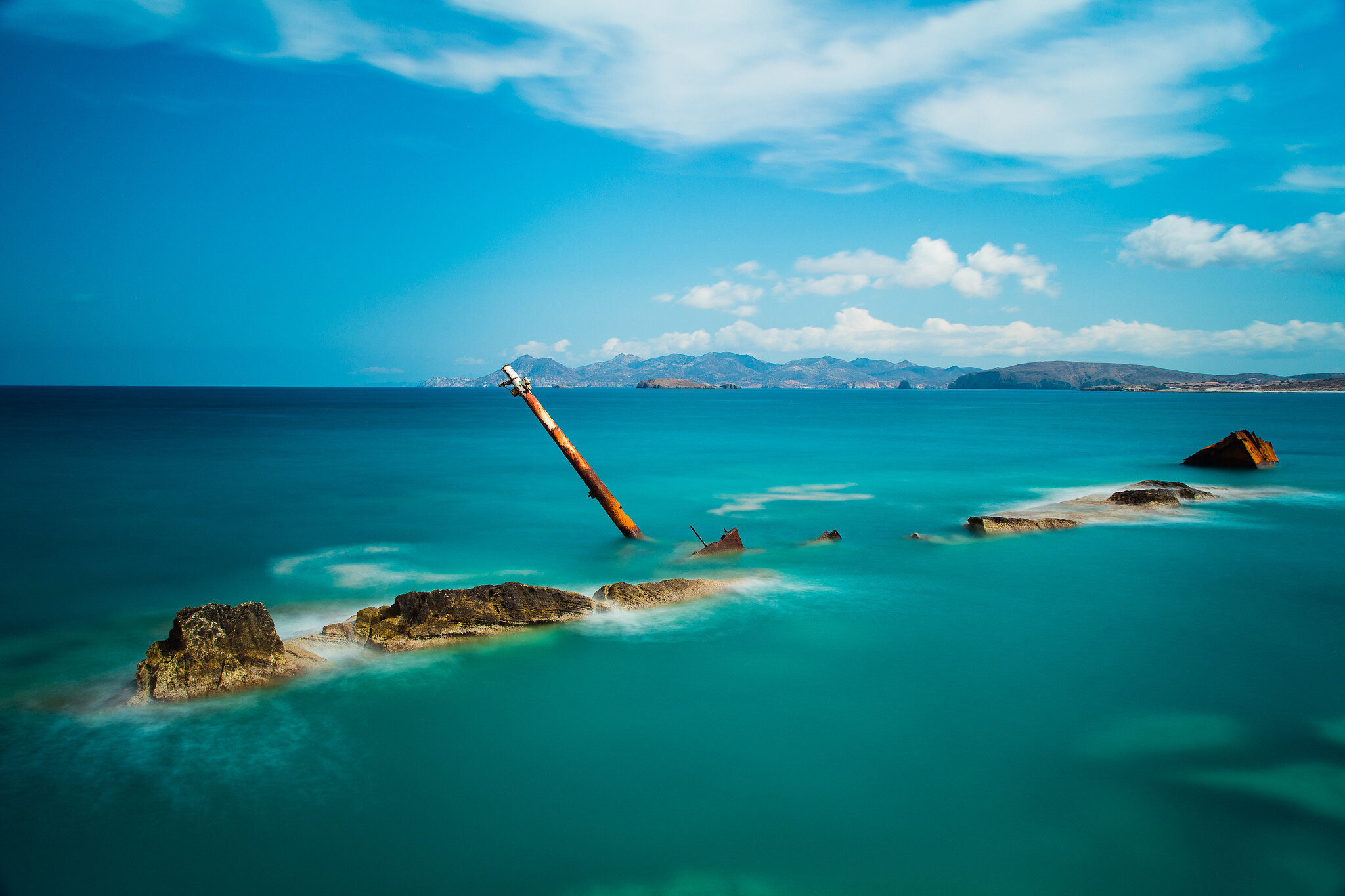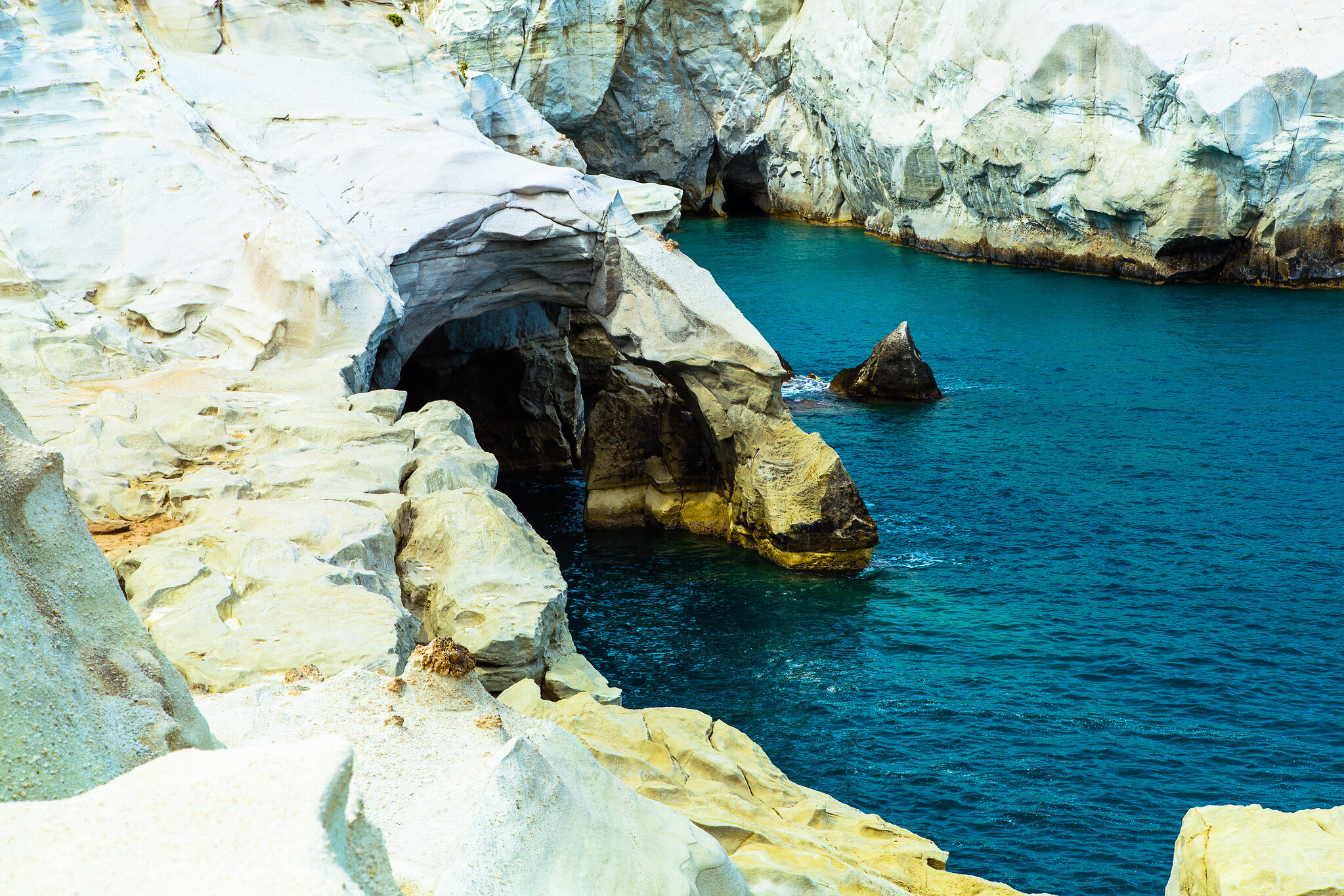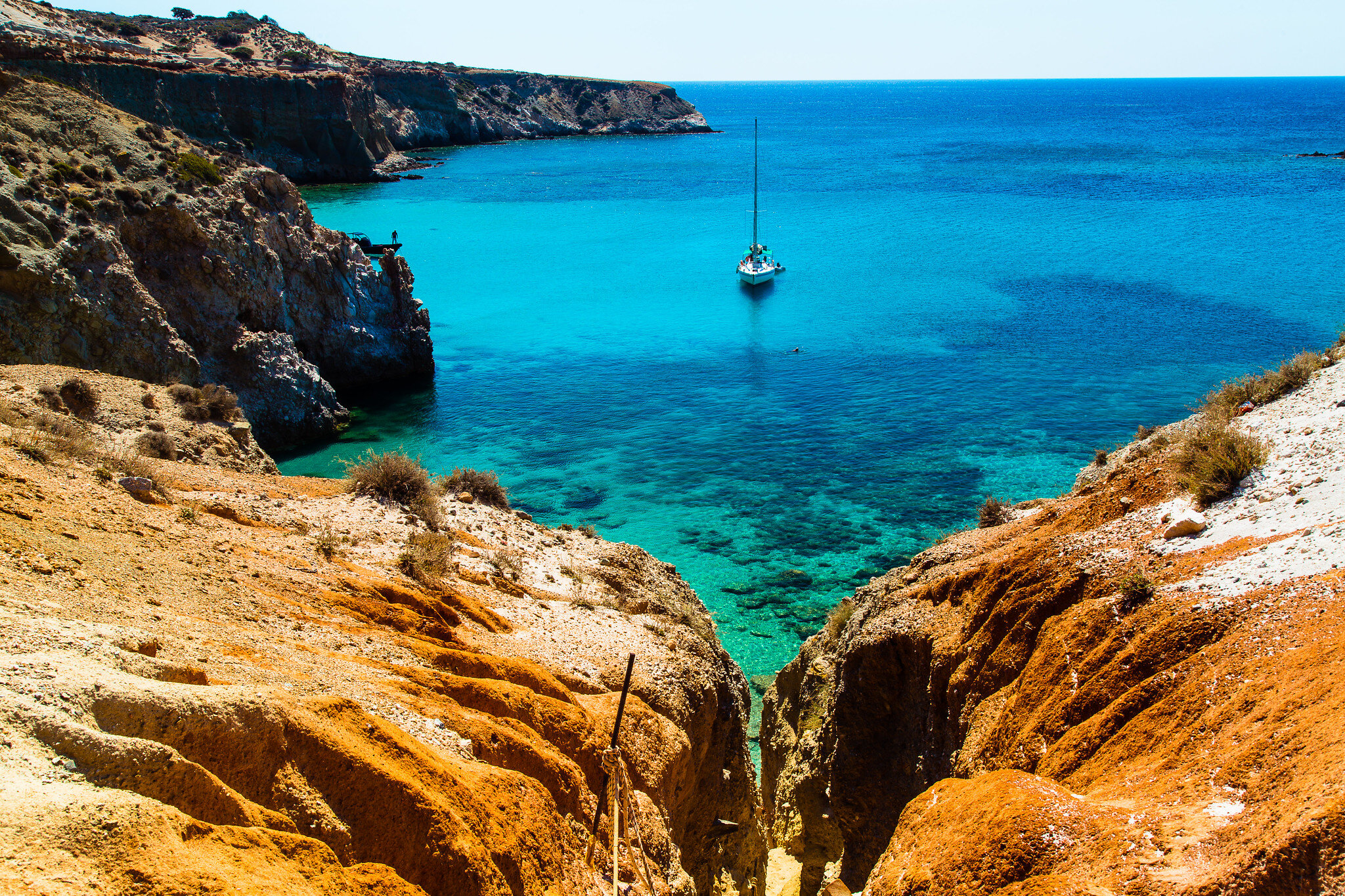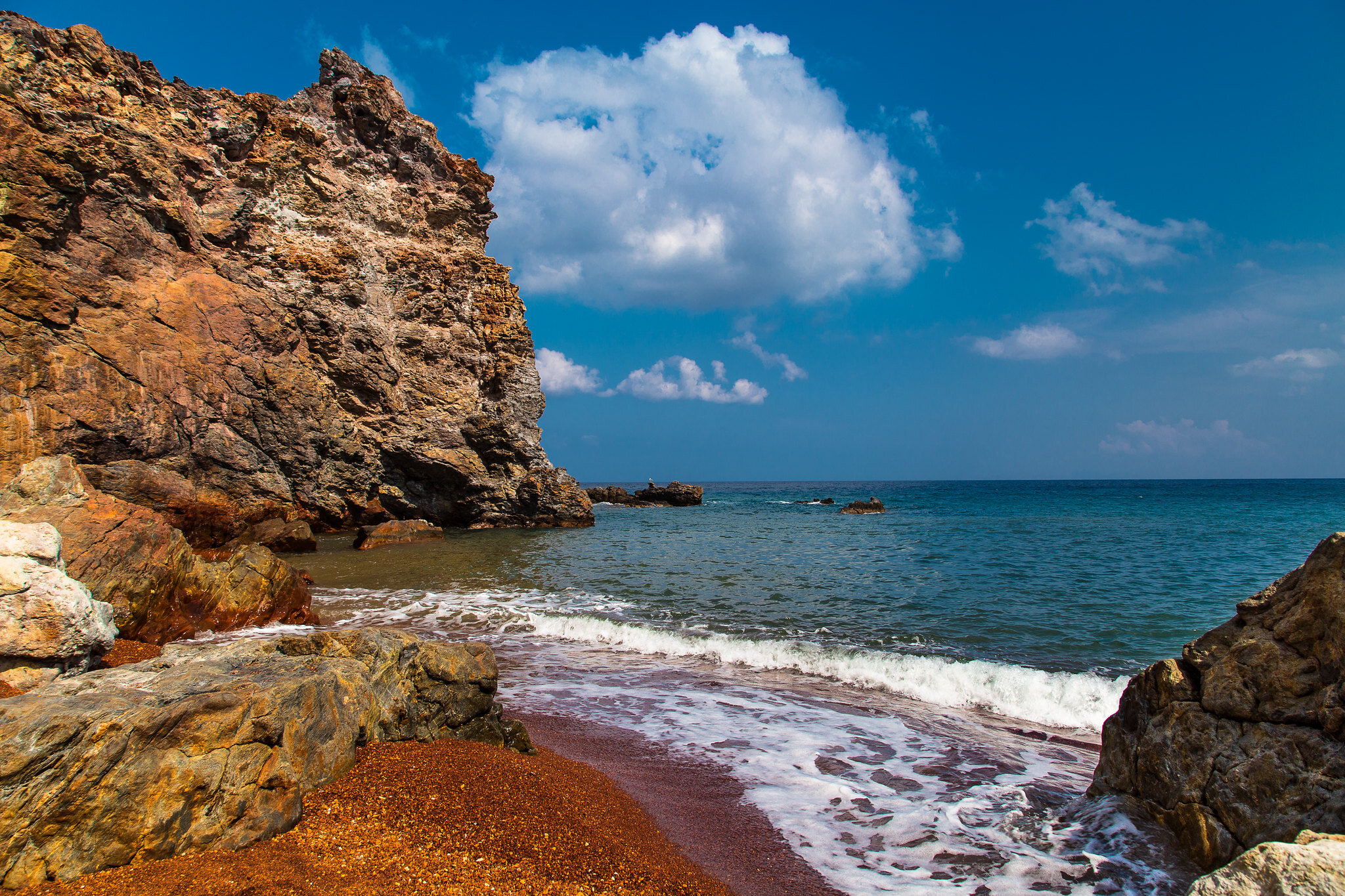Milos
Milos has been supplying the world with its abundant mineral resources since ancient times, with obsidian, a glass-like volcanic rock used for razor-sharp tools, mined as far back as 15,000 years ago, and as a producer of sulphur, of which it was the biggest source in antiquity. The first settlers were tuna fishermen in the Bronze Age. Minoan, Mycenaean and Dorian cultures then influenced the island, with Athens invading in 416 bc and demanding that Milos should fight with them against Sparta, or face destruction. This was rejected, so after the Athenian army’s victory, all adult men were executed, with women and children sold into slavery. During the Hellenistic period when King Phillip II of Macedon, father of Alexander the Great, ruled over the Cyclades, Milos and its neighbour Kimolos disputed ownership of neighbouring Poliegos. The Romans arrived in 197 bc. In 9 ad the archipelago was harassed by Arab invaders. It was still important to the Byzantines until 1204 when the Fourth Crusade occurred and Constantinople was ransacked. The Venetians then took control appointing the first Catholic bishop in 1253. The Ottomans took command in 1566. It had two bishops, one Greek Orthodox, the other Latin Catholic, and though the islanders had a certain amount of autonomy, they suffered under the weight of Ottoman taxation. The Russian Empire took control for three years in 1771. From a population of 6,000 in the early 18th century, it declined to below 500 in 1798, though by 1821 it had apparently risen to 5,000. The island was one of the first to join the Greek War of Independence in 1821. Source: Wikipedia / Milos
This was rejected, so after the Athenian army’s victory, all adult men were executed and the women and children sold into slavery.
And with so much history, how can I not be fascinated by Milos? One of my favourite spots is close to the village of Trypiti, above the small port of Klima, there, two churches watch over the bay entrance to Adamantas harbour. In the ancient town close by is a well preserved Roman theatre, town walls and other buildings, one with a fine mosaic excavated by the British school in Athens in 1896. World famous works of art have been found on the site, notably the Venus of Milos in Paris, the Asclepius in London, the Poseidon and the archaic Apollo in Athens.
Read my essay about Milos in INSIGHTS GREECE magazine.
Neighbouring Churches, Milos
… close to the village of Trypiti, above the small port of Klima, there, two churches watch over the bay entrance to Adamantas harbour.
Single Tree, Milos
































